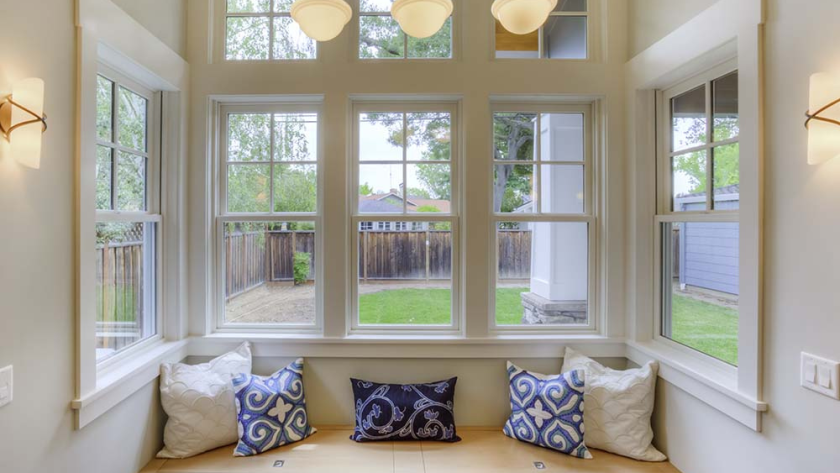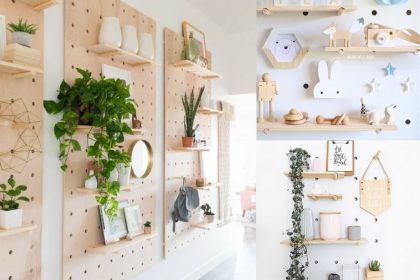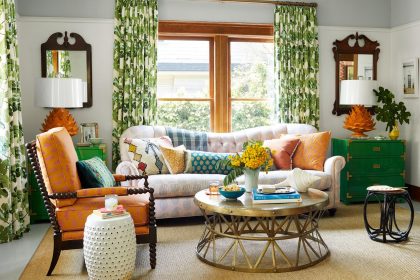As the world of architecture and interior design continues to evolve, so does the realm of window installation and design. In this blog post, we will delve into the exciting and innovative trends that are reshaping the way windows are installed and integrated into modern homes and buildings. Whether you’re a homeowner looking to update your living space or a design enthusiast curious about the latest advancements, this article will provide you with insights into the top trends that are influencing window installation and design choices today.
The Significance of Windows Beyond Functionality
Windows are more than mere openings in walls; they serve as dynamic interfaces that bridge the interior and exterior worlds. Beyond their functional purpose of allowing light and air to enter spaces, windows contribute to the overall design narrative, influence emotions, and offer glimpses into the surrounding environment. Understanding the multifaceted significance of windows opens a new perspective on how they can transform spaces into captivating and enriching environments. Windows play a pivotal role in defining the architectural style and character of a building. They contribute to the overall visual appeal and personality of a structure, whether it’s a historic home with intricate, ornate windows or a modern building with sleek, minimalist designs.
The size, shape, placement, and design of windows can evoke specific emotions and make a powerful design statement.Windows also facilitate a delicate balance between privacy and interaction. They allow occupants to observe the world outside while creating a boundary that shields the interior from external elements. Windows enable people-watching, glimpses into neighbors’ lives, and interactions with passersby, fostering a sense of community and connection.
The Evolving Role of Windows in Modern Architecture and Design
windows have undergone a profound transformation from mere openings to dynamic and multifunctional elements that shape the very essence of a building. Windows have evolved into powerful design statements that communicate the essence of a building’s architectural style. Modern architecture embraces diverse window shapes, sizes, and configurations to create unique visual identities. From asymmetrical arrangements to large expanses of glass, windows contribute to a building’s character and often serve as its focal points.Let’s dive into the key trends that are defining the present and future of modern window installation and design:
1. Sustainability and Energy Efficiency
As the world becomes more environmentally conscious, windows are evolving to maximize energy efficiency. For example, triple-pane windows with argon gas fill and low-E coatings for enhanced insulation. High-performance glazing, low-emissivity coatings, and insulated frames contribute to reduced energy consumption and improved thermal insulation. Passive solar design principles are also being incorporated, harnessing natural light and heat to minimize reliance on artificial lighting and heating systems.
2. Minimalist Frame Designs
Modern aesthetics often favor sleek and minimalist designs, and windows are no exception. Thin profiles and hidden frames create a seamless transition between indoor and outdoor spaces, allowing for expansive views and maximizing natural light. These designs prioritize the window’s visual impact while minimizing obtrusive elements. Example: Windows with slim aluminum frames that offer expansive views and a sleek appearance.
3. Smart and Automated Solutions
The era of smart homes has extended to windows. Automated window systems can be controlled remotely, adjusting ventilation and shading based on weather conditions and occupants’ preferences. Some windows are equipped with sensors that monitor indoor air quality and adjust ventilation accordingly, enhancing both comfort and energy efficiency.
4. Biophilic Design Integration
Windows play a crucial role in biophilic design, which seeks to connect occupants with nature. Example: Windowsills designed to accommodate small potted plants, creating a seamless connection to nature indoors. Incorporating greenery, natural textures, and elements inspired by the outdoors into window designs creates spaces that promote well-being, reduce stress, and enhance the overall sensory experience.
5. Dynamic Glazing and Tinting
Dynamic glazing technologies allow windows to adjust their transparency or tint based on external conditions. Electrochromic and thermochromic glass can darken or lighten in response to sunlight, reducing glare and heat gain while maintaining a connection to the outdoors Electrochromic windows in commercial buildings that adjust tint to control glare and heat, reducing the need for blinds.
6. Large and Expansive Windows
Design trends are favoring larger, floor-to-ceiling windows that flood interiors with natural light and provide breathtaking views. These expansive windows blur the lines between indoor and outdoor spaces, creating a sense of openness and freedom.
Example: Floor-to-ceiling windows in luxury penthouses that offer panoramic views of the city skyline.
7. Multi-Functional Windows
Windows are being designed to serve multiple functions. Foldable or sliding windows can transform indoor spaces into outdoor-like areas, while windows with built-in seating or storage enhance both utility and aesthetics.
Example: Windows that fold outward and serve as both windows and balcony railings in small apartments.
8. Customization and Artistic Expression
Advancements in window manufacturing have enabled greater customization. Architects and homeowners can now experiment with various shapes, sizes, and patterns, allowing for artistic expression and unique design statements.
Example: Stained glass windows with intricate designs that reflect cultural or personal themes.
9. Noise Reduction and Acoustic Comfort:
In urban environments, noise reduction is a crucial consideration. Modern windows incorporate soundproofing technologies to create quieter indoor spaces, contributing to enhanced comfort and well-being.
Example: Windows with laminated glass and acoustic insulation layers to minimize external noise in urban environments.
10. Embracing Heritage and Tradition
In some cases, modern window design takes inspiration from historical architecture. Contemporary interpretations of traditional window styles combine the charm of the past with the functionality and efficiency of modern materials and techniques. The world of modern window installation and design is a dynamic landscape, shaped by innovative technologies, sustainability priorities, and evolving design philosophies
Example: Contemporary homes with modern interpretations of classic double-hung windows found in historical architecture.
Conclusion
These top trends reflect a commitment to creating windows that not only enhance the visual appeal of buildings but also contribute to energy efficiency, occupant comfort, and a deeper connection to the natural world. By staying attuned to these trends, architects, designers, and homeowners can make informed choices that elevate both the aesthetics and performance of their living and working spaces. As we explore the exciting trends shaping modern window installation and design, it’s important to trust the insights provided by industry leaders. The valuable information shared in this blog post is graciously provided by a trusted window installation company in Winnipeg – Arctic Star Windows.With their profound knowledge and years of experience, Arctic Star Windows has been at the forefront of transforming spaces through innovative window installatiTheir commitment to quality craftsmanship and customer satisfaction is evident in every project they undertake.





